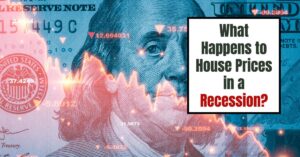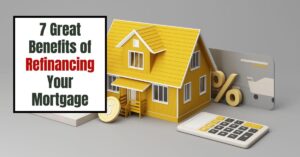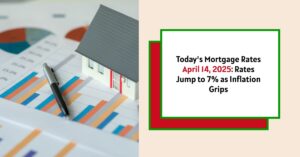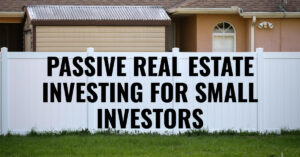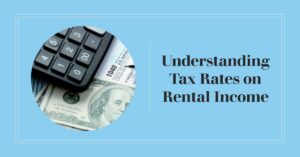The age-old question of what happens to house prices in a recession has plagued both homeowners and hopeful buyers for generations. It's a complex relationship, influenced by a whirlwind of economic factors that can either propel the housing market towards a boom or send it tumbling into a correction. Understanding these factors, historical trends, and expert predictions is crucial for anyone looking to navigate the turbulent waters of real estate during an economic downturn.
What Happens to House Prices in a Recession?
Recessions, characterized by periods of economic decline, often cast a long shadow over the housing market. This is because recessions impact the fundamental pillars that support a healthy real estate landscape: employment, lending, and consumer confidence. Let's break down how these elements interact to influence house prices during a recession.
Recessions and their Impact on Housing: A Historically Tumultuous Relationship
1. Employment and Housing Demand:
- Job losses, a hallmark of recessions, directly impact the purchasing power of potential homebuyers. As unemployment rises, fewer people are in a position to qualify for mortgages, leading to a decrease in demand for housing. This softening demand puts downward pressure on house prices in a recession.
- Example: During the Great Recession (2007-2009), the U.S. unemployment rate surged to 10%, contributing to a significant decline in housing demand. The S&P/Case-Shiller U.S. National Home Price Index, a leading indicator of U.S. house prices, plummeted by over 30% from its peak in 2006 to its trough in 2011.
2. Lending Practices and Housing Affordability:
- Lenders often tighten their lending standards during recessions, making it more difficult for borrowers to secure mortgages. This restricted access to credit further dampens demand and puts downward pressure on recession house prices.
- Example: In the aftermath of the 2008 financial crisis, characterized by widespread mortgage defaults, lenders significantly tightened their lending criteria. This contributed to a decline in mortgage originations, impacting the affordability and accessibility of housing.
3. Consumer Confidence and Housing Market Sentiment:
- Recessions often erode consumer confidence, leading to uncertainty and a “wait-and-see” attitude among potential homebuyers. This hesitancy can further dampen demand and contribute to stagnation or decline in house prices during recessions.
- Example: The economic uncertainty surrounding the COVID-19 pandemic in 2020 initially led to a dip in consumer confidence and a slowdown in the housing market. However, unforeseen factors, such as record-low mortgage rates and a surge in demand for larger living spaces, quickly reversed this trend, demonstrating the complex and sometimes unpredictable nature of recession housing market trends.
Recession Housing Market Trends: Deciphering the Data
While recessions generally paint a bleak picture for recession real estate, it's crucial to remember that not all recessions are created equal. The severity of the economic downturn, government interventions, and prevailing market conditions all play a role in shaping how a recession affects house prices. Let's delve into some historical data to illustrate this point:
- The Great Recession (2007-2009): As mentioned earlier, this recession, largely triggered by a subprime mortgage crisis, led to a dramatic decline in recession home values. The S&P/Case-Shiller U.S. National Home Price Index experienced a peak-to-trough decline of over 30%, highlighting the devastating impact of a severe economic downturn on the housing market. (S&P Dow Jones Indices)
- The Early 1990s Recession: This recession, milder than the Great Recession, saw a more modest decline in recession home values. The Case-Shiller index showed a decline of around 2.5% during this period, demonstrating that even during economic downturns, housing markets can exhibit resilience.
Recession Housing Market Forecast and Outlook
Predicting the future of the housing market, especially during a recession, is a notoriously difficult task. However, understanding historical trends, analyzing current economic indicators, and considering expert opinions can provide valuable insights into potential recession housing market trends.
Factors to Consider:
- Inflation and Interest Rates: High inflation often compels central banks to raise interest rates, leading to increased borrowing costs for mortgages. This can dampen housing demand and impact recession mortgage rates, potentially leading to a slowdown in price growth or even a decline in recession home values.
- Inventory Levels: A balanced housing market requires a healthy balance between supply and demand. Low inventory levels, even during a recession, can prop up house prices during a recession due to limited choices for buyers. Conversely, high inventory levels combined with weak demand can lead to price reductions.
- Government Policies: Government interventions, such as tax incentives for homebuyers or programs designed to assist struggling homeowners, can significantly impact the recession housing market outlook.
Is it a Good Time to Buy or Sell a House in a Recession?
The age-old question of whether to buy or sell a house during a recession is fraught with uncertainty. There is no one-size-fits-all answer, as the optimal decision depends on individual circumstances, financial situations, and risk tolerance.
Potential Advantages of Buying a House in a Recession:
- Lower Purchase Prices: Recessions often lead to price corrections in the housing market, potentially presenting opportunities to buy a home at a discounted price.
- Negotiating Power: With fewer buyers competing for properties, buyers may have more leverage to negotiate favorable terms with sellers.
Potential Disadvantages of Buying a House in a Recession:
- Job Security Concerns: Recessions often lead to job losses, making it riskier to take on a large financial obligation like a mortgage.
- Declining Home Values: If the recession deepens, there's a risk that home values could continue to decline, leading to potential losses for buyers.
Potential Advantages of Selling a House in a Recession:
- Attracting Cash Buyers: Recessions can lead to an increase in cash buyers seeking investment opportunities, potentially speeding up the selling process.
- Equity Cushion: If you've built up substantial equity in your home, you may be better positioned to weather a potential decline in home values.
Potential Disadvantages of Selling a House in a Recession:
- Lower Selling Price: You may need to accept a lower selling price than you would in a stronger housing market.
- Slower Sales Process: With fewer buyers in the market, it may take longer to find a qualified buyer, potentially increasing carrying costs.
The Bottom Line: Navigating the Recession Real Estate Landscape
While recessions inevitably inject uncertainty into the housing market, understanding historical trends, analyzing current economic conditions, and seeking expert advice can equip both buyers and sellers with the knowledge needed to make informed decisions.
Remember, the real estate market is cyclical, and periods of decline are often followed by periods of growth. By approaching the market with a well-researched plan, realistic expectations, and a long-term perspective, you can navigate the complexities of recession real estate and potentially emerge from the downturn in a stronger financial position.
FAQs
What happens to house prices in a recession?
During recessions, house prices typically decline due to factors like job losses, reduced lending, and decreased consumer confidence. However, the severity of the decline varies depending on the recession's severity and other market factors.
How does a recession affect house prices?
Recessions impact house prices by reducing demand. Job losses lead to fewer potential buyers, tighter lending standards make it harder to qualify for mortgages, and economic uncertainty makes people hesitant to invest in real estate.
Will house prices fall in a recession?
While not guaranteed, house prices are more likely to fall during a recession due to the factors mentioned above. However, the extent of the decline can vary significantly.
Will house prices rise in a recession?
It's possible for house prices to rise in certain areas or market segments even during a recession. This can occur if demand remains strong due to low inventory, government incentives, or specific local economic factors.
How much do house prices drop in a recession?
The percentage drop in house prices during a recession is not fixed and varies greatly. It depends on the recession's severity, the local market, and other economic conditions. For instance, the S&P/Case-Shiller U.S. National Home Price Index plummeted by over 30% during the Great Recession but saw a much smaller decline in the early 1990s recession.
What to expect from the housing market in a recession?
Generally, expect slower sales, lower prices, and reduced buyer demand in a recessionary housing market. However, specific trends can differ depending on the area and the nature of the economic downturn.
Is it a good time to buy a house in a recession?
Buying a house during a recession can be advantageous due to potentially lower prices and less competition. However, it's crucial to consider job security and the risk of further price declines.
Is it a good time to sell a house in a recession?
Selling during a recession may be challenging due to lower demand and potentially lower selling prices. However, if you have built equity and are comfortable with market conditions, you might find opportunities.
Factors affecting house prices during a recession:
Several factors influence house prices during a recession, including unemployment rates, mortgage rates, lending practices, consumer confidence, government policies, and overall inventory levels.
Historical trends of house prices during recessions:
Historical data reveals that recessions often lead to house price corrections, but the magnitude varies. For instance, the Great Recession witnessed a significant decline, while the early 1990s recession saw a more moderate dip. Analyzing past trends within specific markets can provide insights into potential future performance.
- How To Invest in Real Estate During a Recession?
- Are We in a Recession or Inflation in 2024?
- When Did the Recession Start?
- Will There Be a Recession in 2025?
- Is a Recession Coming in 2025?
- Recession and Housing Market: Will Prices Drop?
- Will Real Estate Recession Happen in 2025?
- Housing Market Predictions for the Next 2 Years
- Housing Market Predictions for Next 5 Years
